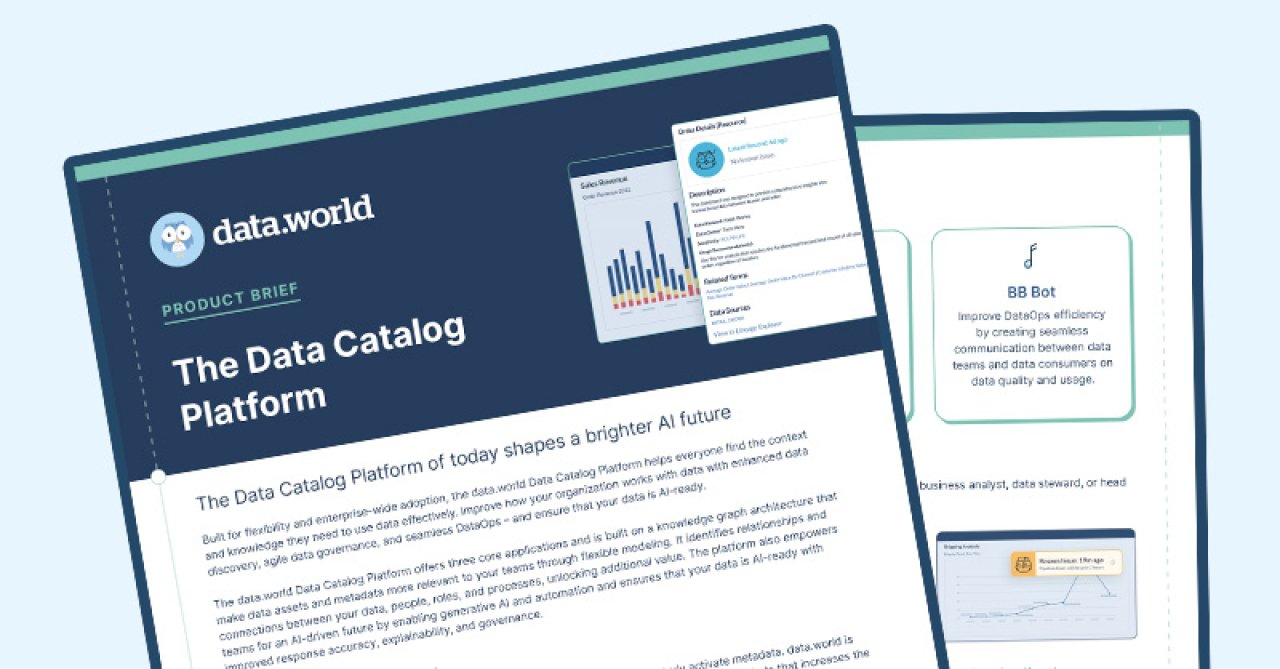







Jan 26, 2022

You’ve established your initial use case, completed your first agile data governance sprint, and now you’re measuring and recording the impact of your project against the KPIs you established in your Agile Data Governance Charter.
Congratulations! Your organization’s taken its first step toward improving interdepartmental collaboration; enhancing data visibility and clarity; and streamlining access and data democratization. And you’re on your way to empowering your workforce to make data-driven decisions and become a team of informed, educated knowledge superheroes.
Now, as you truly begin to enjoy the fruits of Agile Data Governance methodology, you’re going to do it all over again.
As you read in the previous posts of this series, a central tenet of Agile Data Governance is iteration. So it should come as no surprise that implementing an Agile Data Governance program is not something you can set-and-forget.
Instead, upon completion of the initial use case, it’s crucial to perform a retrospective and document what you’ve learned. To borrow from our friends in Open and Agile software development at Product Plan:
A retrospective is a meeting held after a product ships to discuss what happened during the product development and release process, with the goal of improving things in the future based on those learnings and conversations.
(For those who have never participated in a retrospective before, Atlassian Team Playbook provides detailed instructions for running one.)
Performing a retrospective will give you detailed insight into what went right, what went wrong, and what you can do to improve future use-case implementations.
Working with evolving data provides valuable insights almost immediately, which is why Agile Data Governance practitioners see ROI in days instead of months. And by cataloging the work as it happens in your data catalog — not just the “finished” analysis — teams continuously learn from each other and elevate their data literacy.
As your teams build data assets together and watch each other solve real business problems, your community of data producers, data consumers, and domain experts grows. Best-practices spread from team to team, and anyone who wants to make data-driven decisions has the tools, knowhow, and access they need to do so.
To truly be successful, you need to revisit your Agile Data Governance charter semi-yearly to ensure it stays aligned with your overall organization goals and objectives. That means establishing KPIs early and measuring against them from the beginning.
An enterprise data catalog like data.world can help by providing clear insight into the metrics that matter most to your business.
For more information on implementing an Agile Data Governance program, speak with a member of the data.world team.

You’ve established your initial use case, completed your first agile data governance sprint, and now you’re measuring and recording the impact of your project against the KPIs you established in your Agile Data Governance Charter.
Congratulations! Your organization’s taken its first step toward improving interdepartmental collaboration; enhancing data visibility and clarity; and streamlining access and data democratization. And you’re on your way to empowering your workforce to make data-driven decisions and become a team of informed, educated knowledge superheroes.
Now, as you truly begin to enjoy the fruits of Agile Data Governance methodology, you’re going to do it all over again.
As you read in the previous posts of this series, a central tenet of Agile Data Governance is iteration. So it should come as no surprise that implementing an Agile Data Governance program is not something you can set-and-forget.
Instead, upon completion of the initial use case, it’s crucial to perform a retrospective and document what you’ve learned. To borrow from our friends in Open and Agile software development at Product Plan:
A retrospective is a meeting held after a product ships to discuss what happened during the product development and release process, with the goal of improving things in the future based on those learnings and conversations.
(For those who have never participated in a retrospective before, Atlassian Team Playbook provides detailed instructions for running one.)
Performing a retrospective will give you detailed insight into what went right, what went wrong, and what you can do to improve future use-case implementations.
Working with evolving data provides valuable insights almost immediately, which is why Agile Data Governance practitioners see ROI in days instead of months. And by cataloging the work as it happens in your data catalog — not just the “finished” analysis — teams continuously learn from each other and elevate their data literacy.
As your teams build data assets together and watch each other solve real business problems, your community of data producers, data consumers, and domain experts grows. Best-practices spread from team to team, and anyone who wants to make data-driven decisions has the tools, knowhow, and access they need to do so.
To truly be successful, you need to revisit your Agile Data Governance charter semi-yearly to ensure it stays aligned with your overall organization goals and objectives. That means establishing KPIs early and measuring against them from the beginning.
An enterprise data catalog like data.world can help by providing clear insight into the metrics that matter most to your business.
For more information on implementing an Agile Data Governance program, speak with a member of the data.world team.